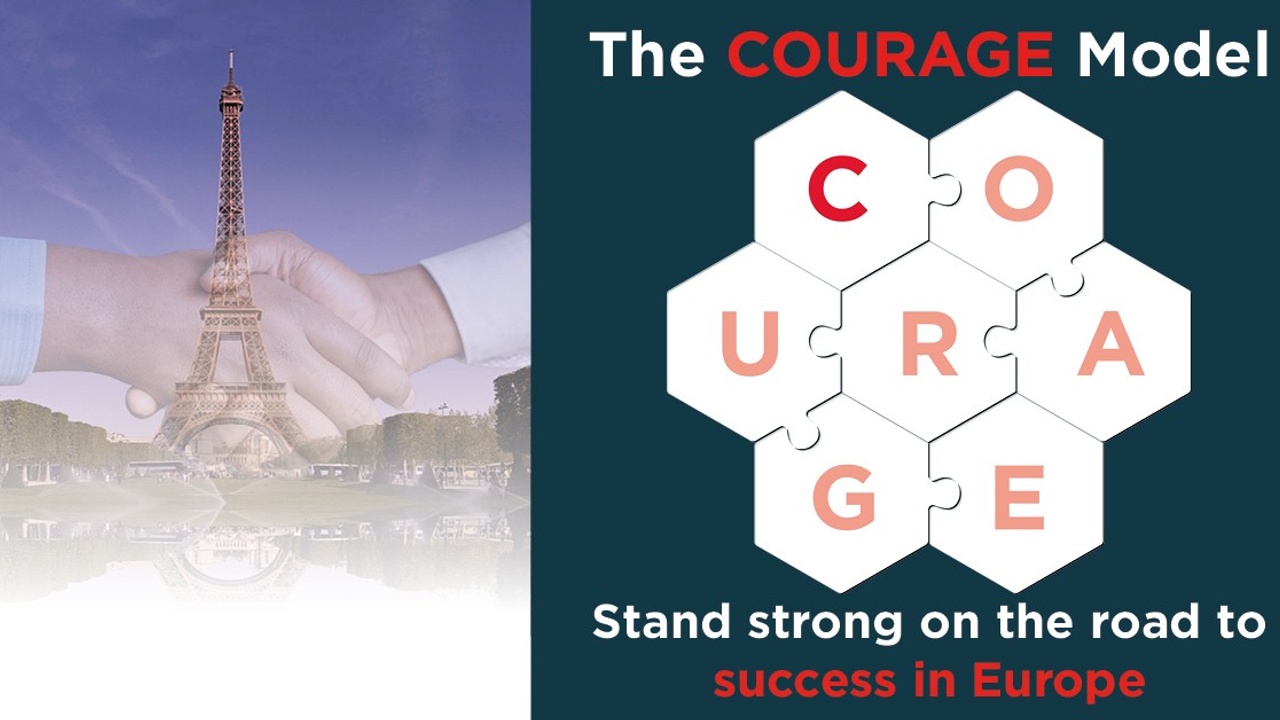C for Customer Insight: Know your European customer

If you want to break through with exports to Europe, you need to know your European customer. While Americans tend to have an "If it ain't broke, why fix it?" mindset, Europeans tend to strive to improve and adjust. Europeans are always tweaking and figuring out how they can do things better tomorrow than they did yesterday, even if there is no real (financial) driver behind the change. This matters to your strategic decisions when choosing to export to Europe.
You probably have a great product of the highest quality on virtually all parameters. A product that suits your American target group and which you believe will fit well with a European target group as well.
You may be tempted to ask me the question: "Charlotte, can you help us find a distributor in Europe?". I have been asked this question quite a few times, and my answer is usually "no" - of course followed by an explanation.
The COURAGE model: Start with the customer
There are definitely retailers and distributors for your product in Europe, but your path to success in the European market does not start here. It starts with the last link in the chain: You must find and know your European customers. And when I say customers, I mean the end user - he / she who ultimately has to authorize the purchase of your product.
Only then can you find your optimal sales channel - and start building a dealer network.
Cultural differences in exports to Europe
Many Americans may have seen glimpses of European culture on vacation or in movies and think most Europeans speak English very well. Therefore, Americans tend to think they know Europe quite well.
Basically, it is my clear recommendation that your approach to the European market should be the same as to any other new market: You should get to know your customer and the culture. This is true whether you are a B2B or B2C company.
Three differences between the typical American and European customer
There are roughly three areas where you, as a rule, can count on your current American and potential European customer being different:
- Americans are usually driven by the mindset "If it ain't broke, why fix it?"
- Europeans, on the other hand, often strive to optimize and make it a little better, smarter and faster.
- Americans think more in "silos" without interest in the larger perspective.
- Europeans have a much more long-term and somewhat holistic approach to their way of doing business think holistically and think in the larger perspective.
- Americans think short-term and quick return ("Return on Investment" = ROI).
- Europeans think sustainably and long-term - "total cost of ownership".
What’s in it for me?
As previously mentioned, the typical American customer has the mindset “if it ain’t broke, why fix it?” mindset, thus they must have a "pain" that you can remove with your product and service. However, that is not necessarily a “must” in Europe.
Europeans often take advantage of new technologies and continuously improve design or add more features. Technical and social innovation is in the European DNA. Thus, if you are an American company considering Europe as your next growth venture, you should consider which submarkets fit your product as-is, and make an effort to explain the benefits of simpler solutions or solutions based on older, perhaps more reliable technologies.
See opportunities in the niche
In the US market, there is a tendency to be highly segmented and choose very narrowly. Companies in the US rarely go out of their area of expertise, whereas Europeans usually cater to multiple segments and more broadly defined markets. This means that when Americans come to the European market, they would need to identify the target audience more broadly than the case might be in their home market.
Having said all that, you should keep the niche in mind. For example, you can find environmentally conscious customers in several different industries or geographic areas in the United States and on the other hand, you can find Europeans who don’t care too much for it. Therefore, no matter which market you are targeting, you will need to identify where your product brings value to that specific customer segment that appreciates the value and recognizes how it is superior to the alternatives.
Your export advisor to the European market
There's help available. I can guide you through the entire process of establishing your American company in the European market.
With more than 35 years of experience with international business, I have seen most of the mistakes that can be made. Having helped almost 200 companies to succeed in their export ventures, I have seen both the outliers and the mistakes that are common across industries, company size and countries.
Contact me for a non-committal talk on how I can help your business with your next strategic step in the European market.
Stay tuned for next week’s blog where I will continue the COURAGE model’s O: Obsessed with local markets.
_
Charlotte Nytoft / Sep 7th, 2021
Mobile / Whatsapp: +45 41609119
E-mail: [email protected]
